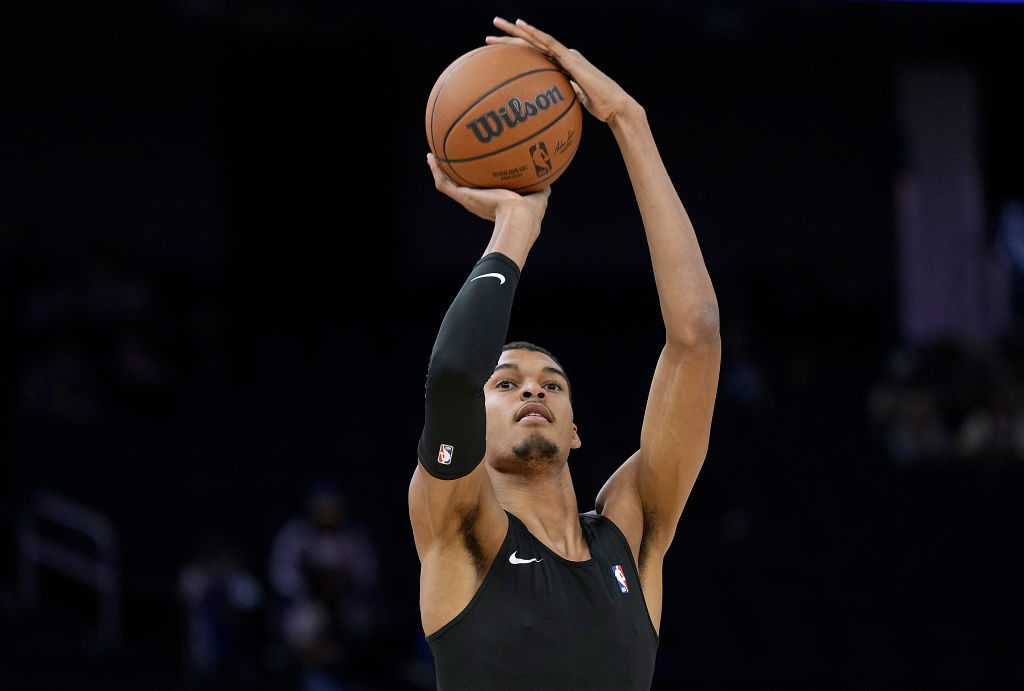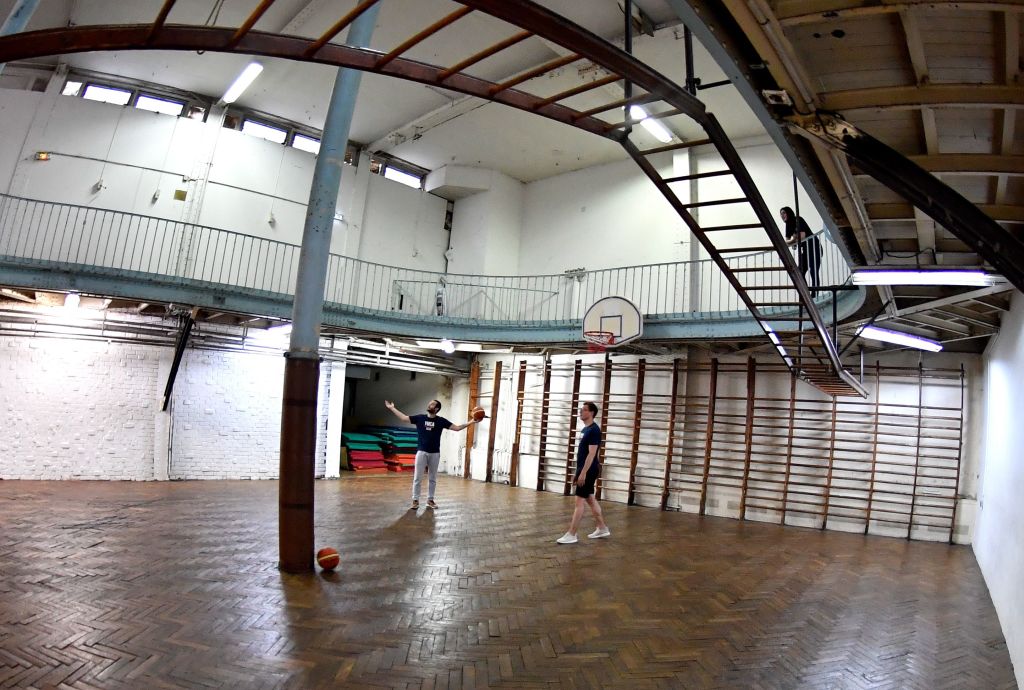
On Oct. 25, one of the most highly anticipated NBA rookies will debut in the San Antonio Spurs’ opening game of the 2023-24 season: 19-year-old Victor Wembanyama. The French player known as “Wemby” is already making waves on the court—he recently dunked on Miami Heat’s Thomas Bryant during a pre-season game—and off-court in his tribute to fellow French ace Marine Johannès during her WNBA Finals run with super-team New York Liberty.
But Wembanyama’s career is a reminder of how much the NBA itself is shaped by international players, particularly its French connection, which has sent the most non-North American talent to the league all-time.
Read More: Why Victor Wembanyama Is Unlike Any Draft Prospect in NBA History
The links between France and basketball go back to the game’s origins. Two years after the game’s 1891 invention in Springfield, Mass., 22-year-old YMCA educator Melvin Rideout arrived in Paris to transmit the game to French counterparts. The first basketball game on European soil was held Dec. 27, 1893, in the new Paris YMCA facility at 14, rue de Trévise, which today is the oldest original basketball court in the world.

The game spread across Western Europe before the First World War, but it took on a new meaning during the early Cold War with Paris Université Club (PUC). This amateur club helped sow the seeds that made France a 21st century basketball breeding ground thanks to a culture of openness to outside influences and players.
The team, composed mostly of university students from around the French capital, was one of the country’s elite of the era. It won French league titles and tournaments and featured members of the men’s national team on its roster, including longtime captain Roger Antoine, Team France’s first male basketballer with African roots. The club also traveled throughout Europe, including behind the Iron Curtain, and North Africa, exposed along the way to different styles of play.
Thanks to its cosmopolitan outlook and makeup, PUC was ground zero for integration of U.S.-influenced basketball tactics, techniques, and drills. Such efforts were due to the team’s first “American” of the postwar era, Martin Feinberg, the son of a Cleveland cab driver who arrived in Paris in 1954 to study at the Sorbonne. The tall U.S. player was rapidly recruited and introduced French teammates to some of the training drills and styles of play he learned back home, including during the 1945-46 season at the University of Michigan while he trained to be a U.S. Navy officer. Feinberg organized a trip for the team to travel to the United States—the first French side to do so—to see how differently the game was held, played, and consumed. The experience was transformative, and PUC began to integrate plays they picked up as a result of their trip into their on-court arsenal.
Several years later, another American, recruited by Feinberg, came to Paris to connect its basketball style to that flourishing across the Atlantic: Henry “Gentleman” Fields. By the 1960s, players like Boston Celtics star Bill Russell transformed the U.S. game into an ever-more vertical one, whereas its French counterpart was still centered on passes akin to a "ballet on the court." Fields brought Bill Russell-style defense and techniques to France. Fields also modeled a U.S.-style work ethic when it came to sport; he diligently practiced hour after hour, at a time when basketball practices in France were semi-weekly.
Read More: Why Athletes Use Their Platform to Effect Change Off the Field
Fields’ impact was real. PUC clinched the French championship title in 1962, and the Coupe de France trophy in 1962 and 1963. He was also integral to PUC’s 1962 return to the United States, where they again tested themselves against American counterparts and picked up new tactics, techniques, and a first-hand understanding of how racial segregation in the United States impacted the game. By the time Wembanyama’s maternal grandfather, Michel de Fautereau, began to play the first of three seasons with PUC in 1967-68, the club’s style and culture were forever marked by “their Americans” Feinberg and Fields.
Fields wove an indelible mark on the game. He later conquered hardcourts with Antibes in the 1970s, as well as imparted his Russell-style game in clinics with the French, Swiss, and German national teams. These were further examples of how individuals played important roles evolving basketball overseas thanks to cultural, technical, and knowledge exchange—examples of what today would be considered types of sports diplomacy.
Thanks in part to these early informal people-to-people exchanges, the French game changed. Although basketball migrants from across Europe, Africa, and the French Caribbean contributed significantly to France’s hoops history since the mid-20th century, the game’s U.S. accent left a strong mark. Ever-more young men from the United States played on French hardcourts in the 1970s and 1980s, leading to what French media decried as an “American colonization” of the game; in the 1980s, their female counterparts also began to dribble in France, too, including Hall of Famer Denise Curry.

As a result, the flow of players began to change in the 1980s and 1990s as young Frenchwomen and men began to cross the Atlantic to play in North America. They became NCAA Division One starters, such as Marist College’s Paoline Ekambi, the first Frenchwoman to play at that level in 1984, and multi-year co-captains like University of Washington Huskies’ Katia Foucade. In 1997, Isabelle Fijalkowski and Tariq Abdul-Wahad made history as the first French players in the WNBA and NBA, respectively, as did subsequent generations including Tony Parker, the first Frenchman to win an NBA Championship in 2003 with the San Antonio Spurs and later enshrined into the Hall of Fame (2023), and Sandrine Gruda, the first Frenchwoman to win an WNBA Championship in 2016 with the Los Angeles Sparks.
Read More: Emmanuel Macron Wants To Lead Europe. Now, He Must Focus on France
They were products of the generations of informal sports diplomacy exchanges on and around the basketball court who have helped to make France one of the main pipelines of international players into the NBA. As part of the larger international cohort, particularly the European one, they are helping to change how we think about the league. Today’s NBA is where the best players in the world vie for on-court honors, trophies, and bragging rights, in the process helping to spin parts of their own country’s hoops culture and history into that of the world’s elite championship, further growing and globalizing the game.
As Wembanyama makes his regular season debut, he will make history, but he is also the product of France’s rich basketball history and its ties to its ami américain.
Lindsay Sarah Krasnoff is a historian and consultant, author of Basketball Empire: France and the Making of a Global NBA and WNBA, Adjunct Instructor at New York University’s Tisch Institute for Global Sport, and director of the FranceAndUS sports diplomacy project. Made by History takes readers beyond the headlines with articles written and edited by professional historians. Learn more about Made by History at TIME here.
More Must-Reads From TIME
- The 100 Most Influential People of 2024
- Coco Gauff Is Playing for Herself Now
- Scenes From Pro-Palestinian Encampments Across U.S. Universities
- 6 Compliments That Land Every Time
- If You're Dating Right Now , You're Brave: Column
- The AI That Could Heal a Divided Internet
- Fallout Is a Brilliant Model for the Future of Video Game Adaptations
- Want Weekly Recs on What to Watch, Read, and More? Sign Up for Worth Your Time
Write to Lindsay Sarah Krasnoff / Made by History at madebyhistory@time.com
